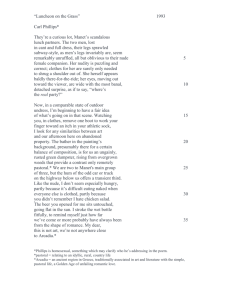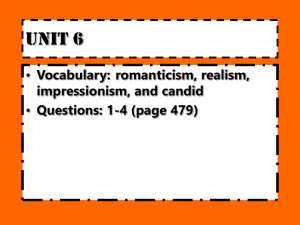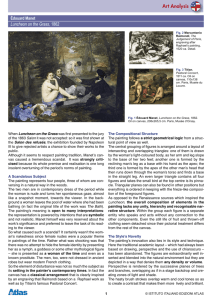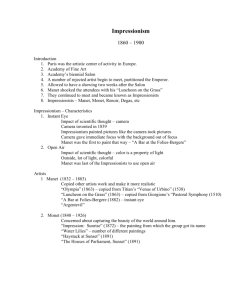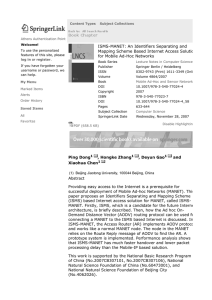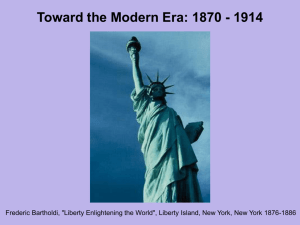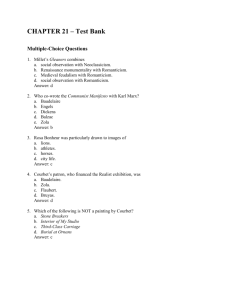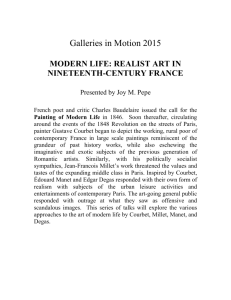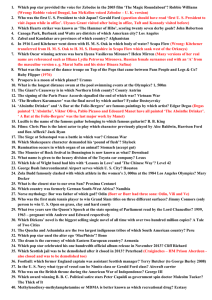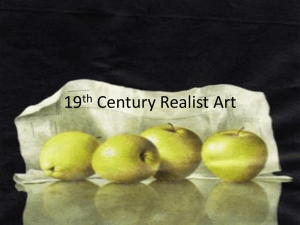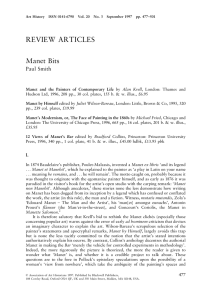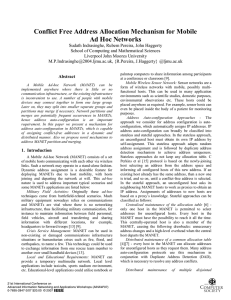FOUNDATIONS IV_MANET - General Education @ Gymea
advertisement
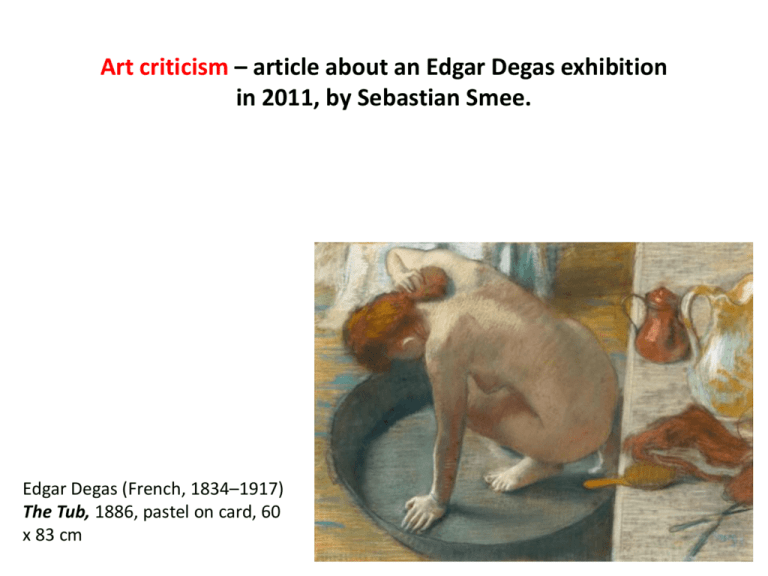
Art criticism – article about an Edgar Degas exhibition in 2011, by Sebastian Smee. Edgar Degas (French, 1834–1917) The Tub, 1886, pastel on card, 60 x 83 cm Woman in the bathtub, c. 1886, pastel on paper, 70 x 70cm Woman at her toilette, 1900-1905, pastel on tracing paper, 75 x 72.5cm Remembering the Conceptual Framework, we’ll use the following categories, more or less: Artist / artwork; Artist / world; Artist / audience; Audience / artwork; Audience / artist; Artwork / world. FOUNDATIONS OF MODERNISM IV – EDUARD MANET (French 1832-1883) Manet is an important figure in 19th Century art. He and Courbet (last session) were hugely influential on the Impressionist painters. Manet is often called an Impressionist, although he never exhibited with that group. He has been called ‘ The Father of Modernism’, because some of his work caused a sensation, and marked a turning point in the way artists described their world. This image was Manet’s first submission to the Salon – EPIC FAIL! The Absinthe Drinker, 1859, oil on canvas, 178 x 103 cm Manet was influenced by Spanish art which was becoming popular in France during the 19th century. The Absinthe Drinker shows the influence of the great 17th century Spanish master, Velasquez. The Spanish painters used a lot of black, and you can see here some similar compositional strategies. Both these Velasquez works are of ancient philosophers so we could say they are history paintings, but the treatment is Realist. Diego Velasquez (Spanish, 1599-1660) Menippus, 163941, oil on canvas, 179 x 94 cm >>>>>>>>>> <<<<<<Aesop, 1640, oil on canvas, 179 x 94 cm Manet studied with the Academy artist Thomas Couture, and diligently copied works at the Musée du Louvre in Paris, as was the Academy tradition. He also travelled, and was especially inspired by the Italian artist Titian who painted in the late Renaissance. His nudes were an inspiration to generations of artists. The idea of the nude as an Academic subject really started with Titian. Titian, (Italy,1485 – 1576) Venus of Urbino, 1538, oil on canvas, 119 cm X 166 cm. . This famous Manet image is an appropriation of the Titian. It is a painting of a prostitute: highly inappropriate subject matter! The Manet nude is not posing as a passive object for a viewer. She is not making herself sexually available, like Titian’s Venus. She is sitting upright, addressing us. She is a human, rather than an object of desire or a Mythical/biblical figure. This painting was accepted by the Salon, but caused a scandal. Manet (French 1832-1883) Olympia, 1863, oil on canvas, 131 cm × 190 cm) . Raimondi engraving after a design by Raphael, Judgement of Paris, c. 1515 Manet, Déjeuner sur l'herbe, (Luncheon on the Grass) (previously called La Bain – The Bath) 1862-3, oil on canvas, 208 cm × 266 cm Titian (Italian 1485 – 1576) or Giorgione (Italian 1477 – 1510) Pastoral Concert, ?1508, oil on canvas, 110 x 138 cm Manet was avant-garde. Basically this means a front-runner; the first ones to take up a new idea or approach. It’s a term originally associated with the Military. This term has been used especially with regard to Modernist Art, which is characterised by a series of movements, (or ‘isms’.) Manet was seen as ground breaking in his style, and influenced many who came after him. However it’s important to remember that he looked back to the old Masters, and actually respected tradition. In 1867 there was an International Exhibition in Paris, and Manet’s work was rejected to be hung there. He got a building erected across the road and showed many of his paintings there. <<<The Balcony, 1868-1869 oil on canvas, 170 x125 cm
